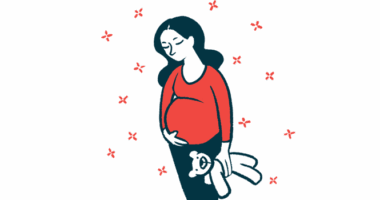Lack of first-line options in India impacts pediatric HAE treatment
Neither TA nor attenuated androgens recommended as preferred therapies

Preventing swelling attacks in children in India with hereditary angioedema (HAE) relies mostly on using tranexamic acid (TA) and attenuated androgens, or male hormones, due to the lack of accessible first-line treatment options, a single-center study shows.
Neither therapy is preferred for HAE and attenuated androgens are contraindicated in children in higher-income countries due to the possibility of severe adverse effects.
“The current study highlights the necessity to introduce affordable and accessible first-line medications in India and other low- and middle-income countries,” the researchers wrote.
HAE attacks in Indian children most commonly affect the face, while the abdomen has been reported as being most commonly affected in other parts of the world. Further studies are needed to understand these differences. The study, “Clinical profile and management of pediatric hereditary angioedema in resource‑constrained settings: our experience from a single centre in North India,” was published in Immunological Research.
HAE is a genetic disease wherein sudden swelling attacks affect the deeper layers of the skin. It’s caused by the overproduction of bradykinin, a protein that regulates blood pressure and inflammation by promoting blood vessel widening, which lets fluid flow from the bloodstream into nearby tissues.
“The pattern of HAE is different in children as compared to adults,” but “published literature on pediatric HAE is very limited,” wrote the researchers, who also noted “there are no previous studies from resource-limited countries where all first-line medications are either unavailable or not easily accessible,” meaning clinicians must “resort to second- or third-line drugs with limited efficacy including tranexamic acid (TA), attenuated androgens (AAs), or fresh frozen plasma (FFP).”
Treating HAE in young people in India
Here, a team led by researchers in India retrospectively analyzed data from 61 HAE patients (32 boys, 29 girls) diagnosed before age 18 at a single Indian center from January 1996 to May 2023. Eligible patients had HAE types 1 and 2 — sometimes called HAE-C1-INH — where mutations in the SERPING1 gene lead to a lack (type 1) or dysfunction (type 2) of the C1-INH protein, resulting in bradykinin overproduction.
The children’s median age was 6.2 at disease onset and 10.7 at diagnosis, and most (70.5%) had a family history of the disease. Nearly all (95%) had type 1 HAE, while three (5%) had type 2 HAE.
The most common symptom was swelling of the eyelids and/or lips (83.6%), followed by extremity and genital swelling (77%), abdominal symptoms (50.8%), and upper airway swelling (45.9%). Triggering events, particularly trauma and stress, were noted in more than half the children (55.7%).
Previous studies elsewhere, including in the U.S. and Denmark, reported the abdomen as the initial and most frequent site of swelling attacks in children with HAE (93%-100%).
“This was in contrast to our study where we noted more facial … attacks,” the researchers wrote, adding that the reasons behind these differences remain unclear.
Compared with 145 adult HAE patients, pediatric patients had a shorter diagnosis delay (4.9 vs. 21.3 years) and a lower rate of abdominal symptoms (50.8% vs. 64.8%). In the pediatric group, a diagnosis was more delayed the younger the age at the onset of first symptoms, however, suggesting “that when symptom onset is earlier, there is a greater likelihood that a diagnosis of HAE would be missed as it is often not considered as a differential diagnosis in very young children,” the researchers wrote.
Treatment with fresh frozen plasma, which provides the blood’s liquid component that contains proteins that can help manage swelling attacks, was used in five children to stop the progression of life-threatening swelling episodes affecting the upper airways. The remaining 23 patients who reported airway swelling weren’t diagnosed with HAE at that time and their swelling resolved spontaneously.
“Because of the lack of all first-line treatment options for [long-term preventive treatment] for HAE in India, all patients were managed using AAs and/or TA,” the researchers wrote.
Given for a median of 3.3 years, treatment was started at the discretion of the treating physician or in children who had at least one attack per month. A total of 38% of the children received TA, which works by reducing bradykinin levels, while 41% received AAs — danazol or stanozolol — which increase C1-INH levels. Fifteen patients needed to switch from AAs to TA due to unacceptable side effects or from TA to AAs due to poor response, indicating AAs were more effective than TA.
In 2022, human plasma-derived C1-INH was marketed in India and was successfully used to manage upper airway swelling in a 14-year-old boy and an abdominal attack in a 10-year-old girl. A 17-year-old girl died due to an upper airway swelling attack before plasma-derived C1-INH became available, the study notes.
The study “highlighted the difficulties with the management of pediatric HAE in resource-constrained settings,” wrote the researchers, who said “with the introduction of [plasma-derived C1-INH] in India, the mortality and morbidity of HAE in children is likely to improve in the future.”







